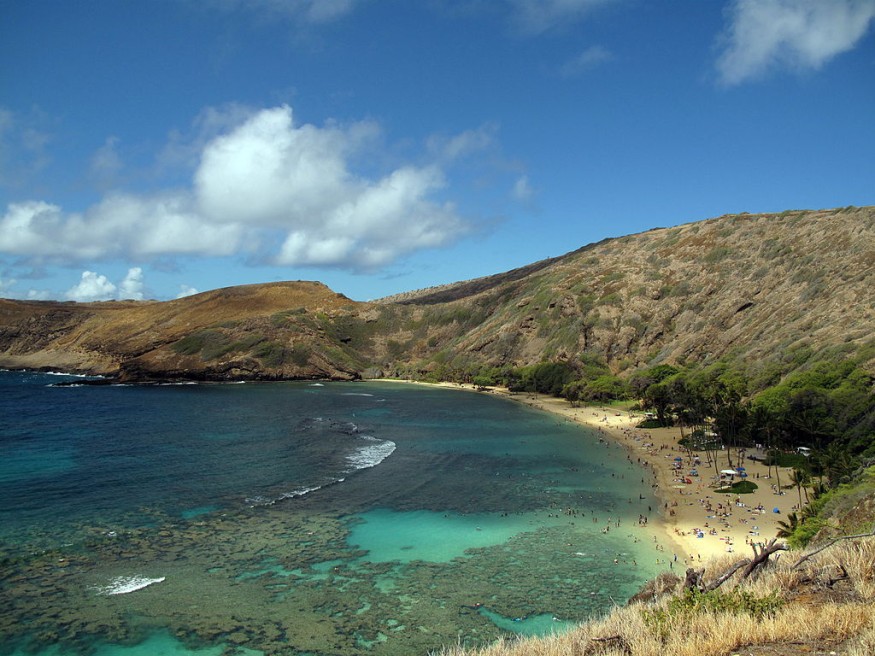
When new coastal landowners choose to remove native plants from Hawaii's coasts, they are found in violation of endangering biodiversity.
Biodiversity at Risk
On Thursday, 15 North Shore property owners in Oahu received violation notices from coastal land officials. These notices are a response to their actions, which involved cutting down native vegetation, relocating soil, and spreading mulch within a designated conservation district along the shoreline in Kahuku. The Department of Land and Natural Resources is currently investigating the potential impact of these actions on native insect and bird species that rely on these plants along the beach to thrive.
North Shore Landowners Cited For Clearing Native Plants Along Beach: Hawaii officials are investigating potential harm to seabirds and an endangered native bee species that relied on the area. https://t.co/0Ka8WjkAOY (↓ Click to read) #HInews
— Honolulu Civil Beat (@CivilBeat) October 20, 2023
This includes the Hawaiian yellow-faced bee, an endangered species due to habitat loss caused by human development, and the wedge-tailed shearwater. Work crews were recently observed using machetes and chainsaws to remove naupaka shrubs and heliotrope trees near Marconi Point, an area designated for agriculture next to Turtle Bay Resort. Violators could face fines of up to $15,000 per violation from the DLNR's Office of Conservation and Coastal Lands, with additional daily fines if the activity persists.
Risking Coastal Bees
Kahuku, on Oahu, hosts Hylaeus Anthracinus, a coastal bee reliant on naupaka, a vital element for its nests, pollen, and nectar. Unlike honeybees, these native yellow-faced bees, which are solitary, use naupaka and heliotrope twigs for nesting. Their pollination supports naupaka and other native plants, crucial for coastal ecosystems' efficiency.
Seven yellow-faced bee species are protected under the Endangered Species Act, and Marconi Point's bee habitat is considered one of Oahu's most robust. State entomologist Cynthia King investigates the unauthorized shoreline work's impact on these bees at Marconi Point, an issue yet to determine the responsible party. This ecological balance hinges on the protection of these coastal bees in Kahuku.
Shoreline Owners
On Wednesday, Makai Ranch, one of the significant property owners at Marconi Point, stated that their understanding was the recent shoreline work was carried out by a new owner who acquired a parcel there in the past few months. State conveyance records confirm that BSS HI Properties assumed ownership of a nearly 2.5-acre parcel on September 1.
The land is categorized under agriculture and preservation. Additionally, Chinese-American television host Yue-Sai Kan, another property owner, applied for shoreline certification with Honolulu County earlier this year, including photos with added lines through the shoreline vegetation. All three companies, including Kan's, are among the 15 that received violation notices. Kan has previously faced scrutiny for structures on her property not complying with city regulations, as reported by Environment Hawaii.
Also Read : Tepui Frogs, Isolated Venezuela Ecosystems at Risk as Climate Change Drives Wildlife to Higher Elevations
Hawaii Birds
Laysan albatross have begun nesting at Marconi Point in recent years, and while they don't rely on naupaka, their nesting habits won't likely be affected by the plant removal. They prefer open grassy areas, as stated by Eric VanderWerf of Pacific Rim Conservation. The cleared shoreline is situated between Turtle Bay's conservation land and the James Campbell Wildlife Refuge.
Conservationists aim to establish it as a viable albatross nesting site due to climate change's impact on their Northwestern Hawaiian Islands habitat. The mulch spreading was prohibited to prevent the invasive Coconut Rhinoceros Beetle from harming native palm trees. Violations will be addressed by the Board of Land and Natural Resources, and landowners have 30 days to propose mitigation measures.
Related Article : Invasive Water Chestnut Takes Over River Surface in New York Again, Fills 400 Dump Trucks
© 2025 NatureWorldNews.com All rights reserved. Do not reproduce without permission.





